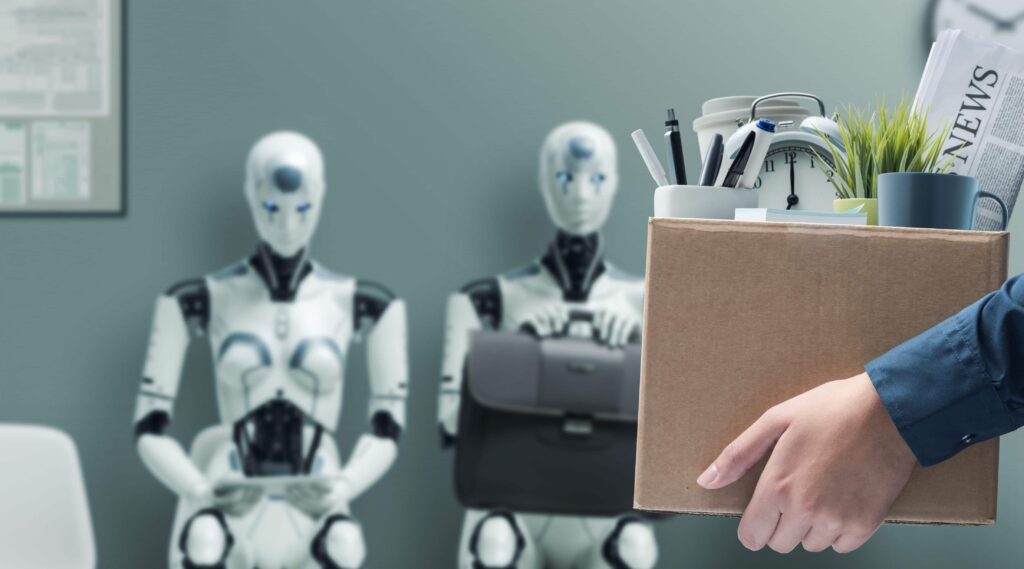I. Introduction
In the fast-paced landscape of the modern workforce, integrating robotics and automation has become increasingly prevalent, reshaping industries and redefining job roles. Understanding the definition and significance of these technologies is crucial in navigating the evolving professional terrain.
A. Definition of Robotics and Automation
Robotics refers to the design, construction, operation, and use of robots, while automation refers to using control systems to operate equipment without human intervention. The synergy of these technologies streamlines processes enhances efficiency, and introduces new possibilities across diverse sectors.
B. Significance of Robotics and Automation in the Modern Workforce
As the world becomes more globalized and technologically advanced, robotics and automation will play a vital role in meeting the needs of its citizens. Besides accelerating productivity, it also catalyzes innovation, transforming industries and job landscapes.
II. Historical Context
A. Evolution of Robotics and Automation
In ancient times, humans devised simple machines to assist in laborious tasks, laying the foundation for robotics and automation. The genuine evolution, however, gained momentum during the Industrial Revolution, with machinery taking over manual tasks. The journey from basic machinery to sophisticated robotic systems reflects the relentless pursuit of efficiency.
B. Key Technological Milestones
Technological milestones mark the progress of robotics and automation. From the first industrial robot in the 1960s to the rise of artificial intelligence (AI) in the 21st century, each step has paved the way for a more automated future.
C. Early Adoption in Industries
Industries, recognizing the potential for increased efficiency, were early adopters of robotics and automation. Manufacturing, automotive, and aerospace were among the pioneers, harnessing these technologies to optimize production processes.
III. Current Landscape
A. Industries Embracing Robotics and Automation
Today, industries, including healthcare, logistics, and agriculture, embrace automation. The versatility of these technologies allows for customization, enabling solutions tailored to the unique needs of each sector.
B. Types of Automation Technologies
Industrial Robots: These machines, equipped with precision and speed, are employed in manufacturing and assembly lines, contributing to increased production rates.
Artificial Intelligence: AI empowers by revolutionizing making decisions, revolutionizing data analysis, customer service, and other cognitive tasks.
Process automation: This involves the use of technology to execute recurring tasks, reducing human intervention and the likelihood of errors.
C. Global Trends in Autoautomation adoption
The adoption of automation is a global phenomenon, with countries worldwide investing in research and development to stay competitive. The shift towards smart financial transformation reshapes the global economic landscape.

IV. Impact of robotics and automation on the Workforce
A. Job Displacement
Routine Tasks vs. Complex Tasks: Automation primarily affects routine, repetitive tasks, freeing human resources to focus on more complex, creative, and strategic endeavours.
Skill Shifts and Reskilling Initiatives: The changing job landscape necessitates reskilling initiatives to equip the workforce with the skills required for roles that complement automated processes.
B. Job Creation
Emerging Roles in Robotics and Automation: As certain jobs become obsolete, new roles emerge in the design, maintenance, and supervision of automated systems.
Collaborative Work between Humans and Machines: The future entails a symbiotic relationship between humans and machines, where each complements the strengths of the other.
C. Social and Economic Implications
Income Inequality: The impact of automation on income distribution requires careful consideration, as some segments of the workforce may face challenges in adapting to the changing job market
.Changes in Employment Patterns: The nature of employment is evolving, with the gig economy, remote work, and flexible arrangements becoming more prominent.
V. Efficiency Gains
A. Increased Productivity
Automation significantly increases productivity by executing tasks precisely and quickly, minimizing the time required for routine operations.
B. Reduction in Errors and Waste
Automation reduces the margin for errors, enhancing the quality of outputs and minimizing waste in manufacturing and other processes.
C. Streamlining of Processes
Automated processes streamline workflows, eliminating bottlenecks and improving overall operational efficiency.
D. Improved Safety Standards
Robots and automated systems excel in tasks that may pose risks to human safety, contributing to improved workplace safety standards.
VI. Challenges and Ethical Considerations
A. Ethical Use of Automation
Bias in AI Algorithms: Ensuring fairness in AI algorithms is crucial to prevent the perpetuation of societal biases.
Privacy Concerns: The collection and utilization of vast amounts of data in automated processes raise concerns about individual privacy.
B. Socioeconomic Challenges
Unequal Access to Automation Benefits: Disparities in access to technology and education may exacerbate existing social inequalities.
Potential for Job Market Disruption: Rapid adoption of automation may lead to job market disruptions, requiring proactive measures for workforce transition.
VII. Future Outlook
A. Advancements in Robotics and Automation Technologies
Anticipated advancements include more sophisticated AI, collaborative robots (cobots), and automation integration into new sectors, such as education and healthcare.
B. Continued Integration into Various Sectors
Automation’s integration will extend beyond traditional industries, influencing how education is delivered, healthcare is administered, and services are provided.
C. Policy and Regulatory Responses
Governments and regulatory bodies play a crucial role in shaping the future of automation by implementing policies that balance innovation with ethical considerations.

VIII. Case Studies
A. Successful Implementations in Industries
Case studies highlight successful automation implementations in diverse industries, showcasing the positive impact on efficiency, cost-effectiveness, and quality.
B. Lessons Learned from Challenges
Analyzing early adopters’ challenges provides valuable insights into refining strategies for a smoother integration of automation.
IX. Conclusion
A. Recap of Key Points
The evolution of robotics and automation has redefined the modern workforce, presenting challenges and opportunities. From historical milestones to current trends and future projections, the journey underscores the need for a balanced approach.
B. Balancing Efficiency with Ethical Considerations
Balancing efficiency gains and ethical considerations is paramount as we march towards an automated future. Striking this balance ensures that the benefits of automation are harnessed responsibly, fostering a sustainable and inclusive future.
C. The Role of Humans in an Automated Future
While machines and automation enhance productivity, the role of humans remains indispensable. Creative thinking, emotional intelligence, and ethical decision-making are unique qualities humans bring, ensuring a harmonious coexistence with automation.
In conclusion, integrating robotics and automation heralds a transformative era for the workforce. Navigating this shift requires a comprehensive understanding of the past, a keen awareness of the present, and a strategic vision for the future. Embracing these changes is thriving in the automation ageing agency thriving in the automation age.








Hi i think that i saw you visited my web site thus i came to Return the favore I am attempting to find things to improve my web siteI suppose its ok to use some of your ideas
What i dont understood is in reality how youre now not really a lot more smartlyfavored than you might be now Youre very intelligent You understand therefore significantly in terms of this topic produced me personally believe it from a lot of numerous angles Its like women and men are not interested except it is one thing to accomplish with Woman gaga Your own stuffs outstanding Always care for it up
I spent over three hours reading the internet today, and I haven’t come across any more compelling articles than yours. I think it’s more than worth it. I believe that the internet would be much more helpful than it is now if all bloggers and website proprietors produced stuff as excellent as you did.